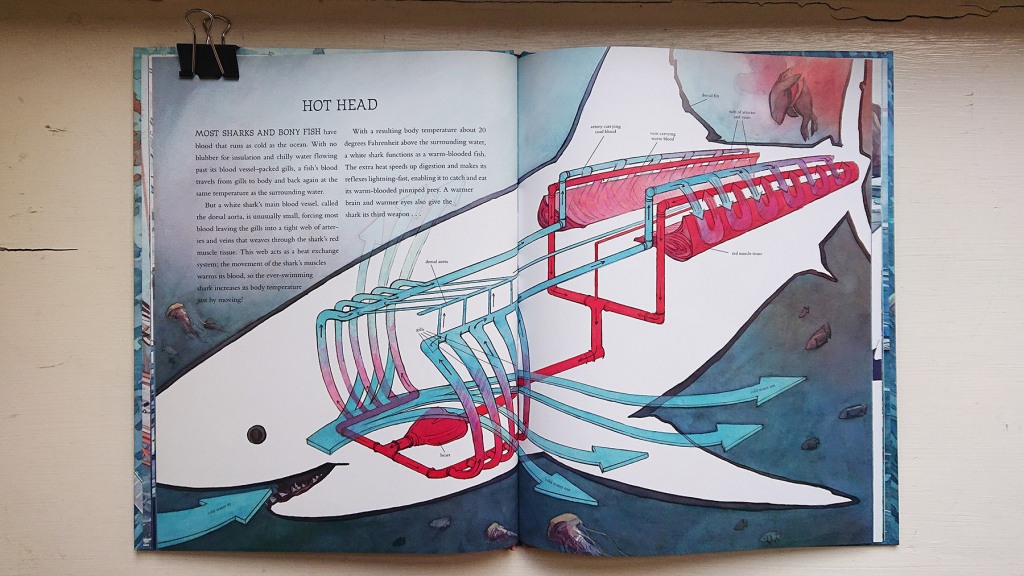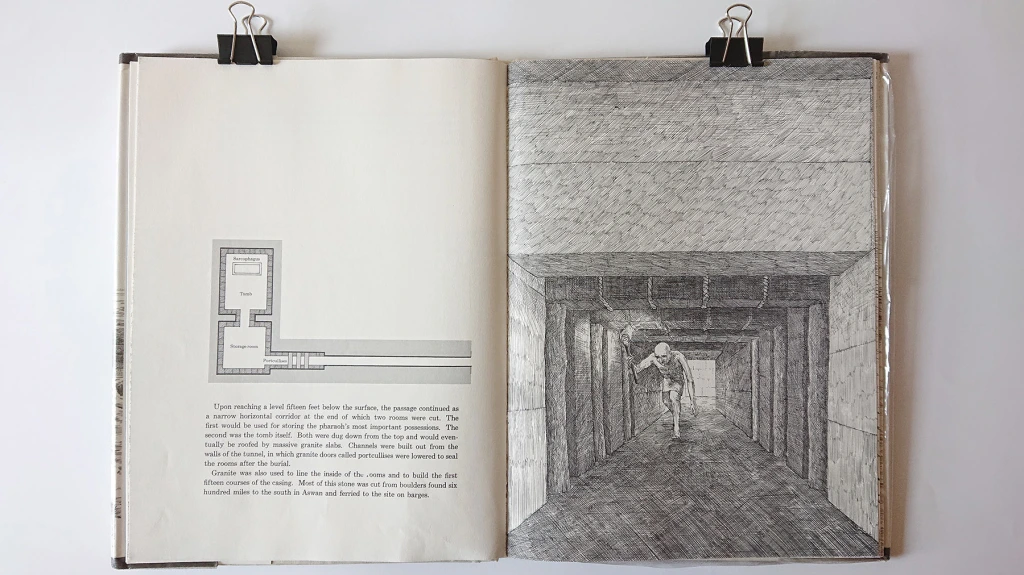
Cutaway illustrations – including anatomy illustrations and exploded views – are very common in children’s nonfiction picture books. They are kind of like maps but on different subjects: animals, humans, plants, houses, ships…. Exploded views you often see of technical subjects.
This is visual information you cannot see in real life: Outside and inside both visible at the same time. Usually they take a lot of the illustrator’s time, and require extensive background work. The illustration might be put together from several different materials and sources: photographs, live sketching, video footage, diagrams and articles. Expert help in different stages is crucial. When it’s nonfiction everything needs to be accurate, and you just don’t necessarily have a shark nearby to cut open (and don’t want to!).

Katherine Roy’s skilled anatomy illustration of a shark shows how its heat exchange system works.

Peter Sís’s cutaway from H.M.S. Beagle, Charles Darwin’s ship departing from Devonport in 1831, shows the ship’s interiors, passengers and crew.

Nano – The Spectacular Science of the Very (Very) Small is a nonfiction book but this house is fiction, I’m guessing – and a good example of a cutaway of a house.

Michael Emberley’s exploded view shows the main components of a smartphone.
These illustrations suit picture books: Easy on the eyes, lots of details, a view not possible (or atleast not usual) in real world. You can go back numerous times and search for details you hadn’t noticed before – or then just wonder at the fresh perspective.
When looking at cutaway illustrations from visual/verbal narrative point of view, they are almost always primarily visual and the verbal part is selective and sparse. They first need to work as an illustration and have all the info needed at its place before texts are added. However they might look rather naked without text.
Looking at structures
Can a cutaway illustration be the main structural factor of a book? Can a book be built around a cutaway, anatomy illustration or an exploded view? Yes it can.

Hospital: The Inside Story walks you through a hospital and its different wards in one day – it’s like a cutaway in the form of a book. All the wards, their purposes, their crew, equipment and actions are shown.

David Macaulay has made numerous impressive books where he dives deep into how things, machines or even entire buildings work. Pyramid is full of different sorts of cutaway illustrations on the construction and use of ancient Egyptian pyramids. Macaulay has a way to combine cutaway illustrations to beautiful full-bleed pictures – all black and white in Pyramid‘s case.
Cutaway illustrations are the second category I have come up with in my Fulbright project during spring 2022 exploring presentations of data in children’s nonfiction picture books published in the United States (and mostly originated; with few exceptions), especially in the years 2021-22. For more information on the project and on the books I have explored read here.
Interested in more?
I’m enjoying your discussion of children’s nonfiction picture books, and am wondering if you’ve taken a look at Melissa Stewart’s 14 MONKEYS, illus. by Steve Jenkins? (cutaway of rainforest layers and size presentations) or Sophie Blackall’s FARMHOUSE? (depiction of time and cutaways)
LikeLike
Thank you Jilanne! I’m so happy to hear it! And wow, I hadn’t seen 14 Monkeys, I really like the book structure and how the rainforest cutaway shows their habitat. Farmhouse is lovely! Thank you introducing me to both of these books 🙂
LikeLiked by 1 person